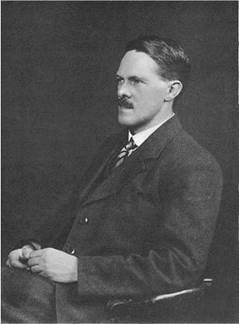Catching Up to the Wright Brothers
Two public demonstrations of perfectly controlled mechanical flight in 1908 by Wilbur Wright in France and by Orville Wright in the United States were clarion calls to the rest of the aeronautical community to catch up with and surpass their achievements. The airplane builders – Curtiss, Bleriot, Levavasseur, the Voisins, Farman, Bechereau, Esnault – Pelterie, and others – responded; by 1910 they flew faster and almost as well; by 1911 they flew better. However, even after these momentous achievements, neither the Wrights nor their competitors still had any real understanding of aerodynamic theory.
1.2 The Invention of Flap-Type Control Surfaces and Tabs
Flap-type control surfaces, in which a portion of the wing or tail surface is hinged to modify the surface’s overall lift, are at the heart of airplane control. Airplanes designed to fly at supersonic speeds often dispense with flap-type longitudinal controls, moving the entire horizontal surface. Also, some airplanes use spoiler-type lateral controls, in which a control element pops out of the wing’s upper surface to reduce lift on that side. Aside from these exceptions, flap-type controls have been the bread-and-butter for airplane control since a few years after the Wright brothers.
It was in 1908 that the aviation pioneer Glenn Curtiss made the first flight of his June Bug airplane, which was equipped with flap-type lateral controls. This was an early, if not the first, advance in lateral control beyond the Wright brothers’ wing warping. The Curtiss lateral controls were attached to the interplane struts between the biplane wings and were all-moving. Curtiss evidently saw them as lateral trim devices, since the wheel was connected to the rudder. The French called the flap-type lateral controls ailerons – little wings – and the name has persisted in the English language. The Germans call them querrudern, or lateral rudders.
The first true flap-type aileron control appears to have been on the French Farman biplane a year or two later. An aerodynamic theory for flap-type controls was needed, but it wasn’t until 1927 that Hermann Glauert (Figure 1.2) supplied this need. Control surface tabs are small movable surfaces at the trailing edge, or rear, of a flap-type control. Tabs generate aerodynamic pressures that operate with a long moment arm about the control surface hinge line. Tabs provide an effective way to deflect main control surfaces in a direction opposite to the deflection of the tab itself relative to the main surface.
|
Figure 1.2 Hermann Glauert (1892-1934). In Glauert’s short career he made important airplane stability and control contributions, in control surface, downwash, airfoil, wing, and propeller theory, and in the equations of motion. (From Obit. Notices of Fellows of the Royal Soc., 1932-1935) |
The tab concept is due to the prolific inventor Anton Flettner, who first applied it to steamboat rudders. One may still find references in the literature to “Flettners,” meaning tabs. Flettner received a basic German patent for the tab in 1922. This was for its application to aeronautics. Flettner’s patent includes a description of a spring tab device (see Chapter 5), which was promptly forgotten. Glauert’s aerodynamic theory for flap-type controls was extended to the tab case in 1928 by W. G. Perrin.












